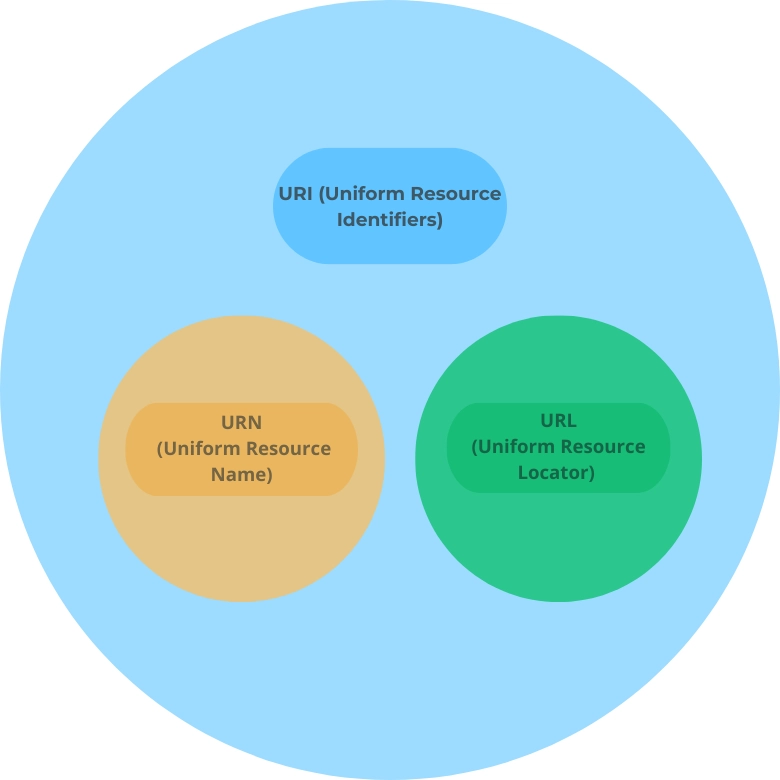In the vast landscape of the internet, terminology often gets mixed up, leading to confusion among both novices and seasoned users. One such pair of often-confused terms is URL and URI. Although they are frequently used interchangeably, URLs (Uniform Resource Locators) and URIs (Uniform Resource Identifiers) have distinct meanings and roles in the realm of web development and networking.
Understanding the differences between them is crucial for anyone involved in creating, managing, or interacting with web resources. In this blog post, we will delve into the definitions, functions, and key differences between URLs and URIs, clarifying their unique purposes and how they contribute to the seamless operation of the web.
Whether you’re a developer, a digital marketer, or simply a curious internet user, this guide will equip you with the knowledge to distinguish between these two fundamental concepts.
What is a URL : Definition
URL (Uniform Resource Locator) can be defined as a string that refers to an address. It is the most used way of locating resources on the Web. It provides a method to obtain a representation of a physical location by describing its location on a network or underlying access mechanism.

The protocol is described in the URL used to fetch the resource and the name of the resource. If a resource is a web resource, the URL will begin with http/https. For files, it will begin with ftp, and for email addresses, it will begin with mailto. URLs typically consist of a scheme (such as http or https), a domain name or IP address, and a path that specifies the location of the resource on the server.
So, a URL is used when we want to make a resource accessible through its web browser, file, or email. In simpler terms, a URL is a type of URI that provides a web address for accessing a resource on the internet.
What is a URI : Definition
Like URLs, URIs (Uniform Resource Identifiers) are also a sequence of characters that serve as a unique identifier for a resource on the internet, using either a location, a name or both. This allows for the uniform identification of resources. A URI is further categorized as a locator, name, or both, meaning it can describe a URL, URN, or both. The term identifier in URI refers to the distinction of resources, regardless of the technique used to accomplish the operation, whether it be location, name, or context.

This identifier can be used to access the resource uniformly across different protocols and systems. URIs can be composed of various elements, including a scheme, a host, a path, and a query string.
The URI (Uniform Resource Identifier) is classified into two categories:
- URL being the first. In a URL, a protocol is utilized to indicate the means of accessing the resource, and the resource’s name is also specified within the URL. URLs are non-persistent URIs.
- The second category of URI is URN, which remains persistent even if the resource is inaccessible. URNs must be globally unique and have a worldwide scope.
URI can also be translated from a source other than the network. Therefore, it must contain the characters most likely to be entered on a computer.
Key differences between URL and URI
- A Uniform Resource Locator (URL) is mainly utilized to establish a link between a webpage, a web page component, or a program on a webpage by utilizing access methods, such as http, ftp, and mailto, to retrieve the location of the resource. In contrast, a URI (Uniform Resource Identifier) is used to define the identity of an item, with the term identifier being used to distinguish one resource from another, regardless of the method used (URL or URN).
- A URL is a URI, but a URI can never be a URL. This means that URLs are a specific type of URI. For example, a URI could be used to identify a resource on a network file system, while a URL can only be used to identify a resource on the internet.
- While URIs can be permanent, URLs are often dynamic and can change over time. For example, a URL for a news article may change as the article is updated or moved to a different location on the website. This means that URLs may not always provide a permanent way to access a particular resource.
- URL specifies what type of protocol should be used whereas URI does not imply protocol specification.
Conclusion
In summary, while URIs and URLs may seem similar, they have distinct differences in their definitions and usage.
A URI is an identifier consisting of a set of characters that allows for the uniform identification of resources through an extensible set of changing schemas specified uniquely (i.e., a name, an address, or a context). On the other hand, a URL is a subset of a URI that describes a resource using one of the URI schemes (i.e., location).
Understanding the difference between these two terms can help ensure that resources on the internet are accessed correctly and efficiently.
To further optimize your understanding and application of these concepts in the digital landscape, consider consulting with our SEO experts. Our team can provide comprehensive guidance on how to effectively use URIs and URLs to enhance your website’s search engine visibility, improve user experience, and drive more organic traffic to your site. Whether you’re looking to refine your current strategies or develop new ones, our SEO specialists have the expertise to help you achieve your online goals.




